|

by Jiji Kyodo
October 18,
2017
from
JapanTimes Website
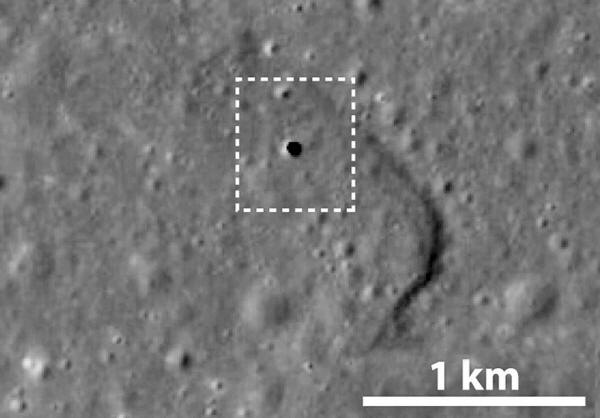
This
undated satellite photo taken by the lunar orbiter Kaguya
shows a
50-meter hole on the moon's surface
that
leads to a 50-km-long cave.
JAPAN
AEROSPACE EXPLORATION AGENCY / VIA KYODO
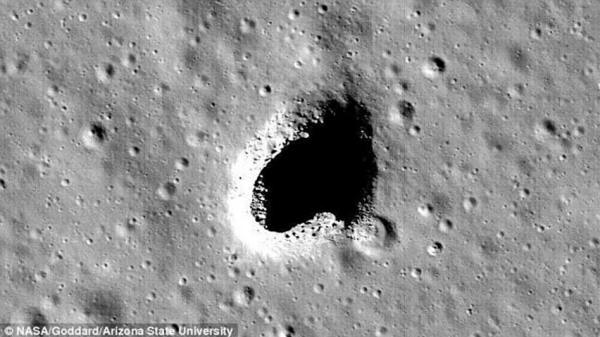
A huge moon
cave (pictured)
that could one
day shelter astronauts has been discovered.
Data taken
from Japan's Selene lunar orbiter
has confirmed
the existence of the 31 mile (50 km) long
and 330 foot
(100 meter) wide cavern.
Source
Observation data
collected by Japan's
lunar orbiter Kaguya has found a
cave stretching about 50 km (30 miles) on the moon that could
potentially serve as a shelter for astronauts on future missions, an
international research team including the Japan Aerospace
Exploration Agency has said.
The cave could protect astronauts from radiation from the sun and
cosmic rays if they build a base for exploration, the team said
Wednesday.
The cave, believed to be a lava tube created about 3.5 billion years
ago, sits beneath an area with a group of volcanic domes called the
Marius Hills, it said.
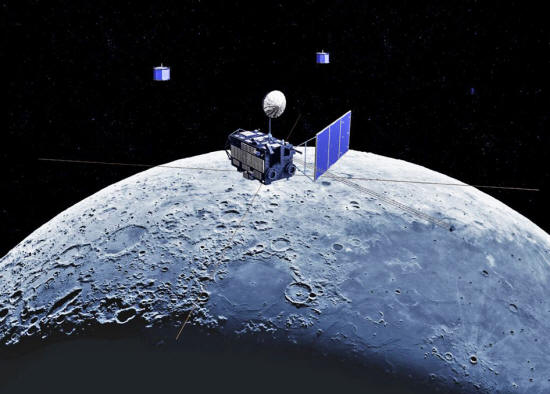
Japan's lunar orbiter Kaguya
is seen in this computer-generated image.
JAXA
The lunar orbiter initially found a hole about 50 meters in diameter
and depth. Further surveys of the area with radio waves discovered
the lava tube, the researchers said.
The cave is believed to have a width of several tens of meters.
Like caves found around Mount Fuji and the island of Hawaii, the
cave on the moon is highly likely to have been formed after the lava
surface solidified following a fall in temperature, according to the
researchers.
"The cave is a
scientifically useful place," said Tetsuya Kaku, a graduate
student at Tokai University involved in the study.
Tetsuya Kaku cited
the possibility of finding minerals produced when the moon was
formed as well as water.
The researchers published their finding (Detection
of Intact Lava Tubes at Marius Hills on the Moon by SELENE - Kaguya
- Lunar Radar Sounder) in U.S. journal Geophysical
Research Letters.
JAXA Probe finds...
50-km Cavern under Surface of the Moon
by Seiji
Tanaka
October 18,
2017
from
Asahi Website
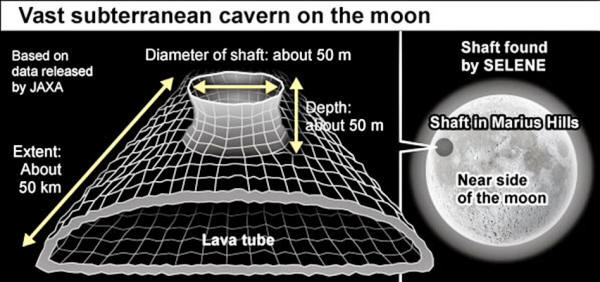
The Asahi Shimbun
Space probe data confirmed that an enormous cavern stretching for
about 50 kilometers exists beneath the moon's surface, offering a
possible protected site for future lunar bases, the Japan
Aerospace Exploration Agency (JAXA)
said Oct. 18.
The cavern, found in the Marius Hills area on the
near side of the moon, is about 100
meters wide and extends for about 50 km, according to data taken by
JAXA's Selenological and Engineering Explorer (SELENE), also
called the Kaguya moon probe.
In 2009, the Kaguya probe found a large shaft with an opening about
50 meters in diameter in the Marius Hills area. The shaft descends
about 50 meters beneath the surface.
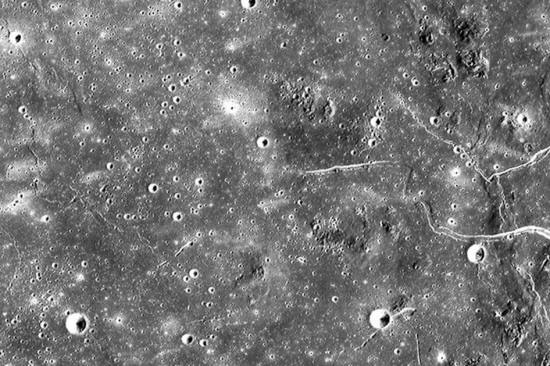
The Marius Hills
on the near side of the moon
(Provided by the Japan Aerospace Exploration Agency)
The JAXA team analyzed data obtained from a lunar radar sounder on
the probe that indicated an underground structure extended west from
the shaft.
The study confirmed that the cavern, likely created by volcanic
activity, has not collapsed, and there is the possibility of ice or
water existing in rocks within the cave, the team said.
If future lunar explorers could use the underground space for a
base, it could provide shelter from cosmic radiation and menacing
temperatures, while
water or ice could be used as fuel,
the JAXA team said.
It is widely believed the moon was rocked by large-scale volcanic
activity until about 1 billion years ago.
The cavern is believed to have been a lava tube formed when the
outer lava cooled and hardened while the melted rock within remained
hot and continued to flow.
|






